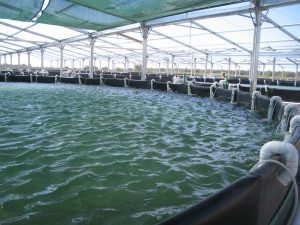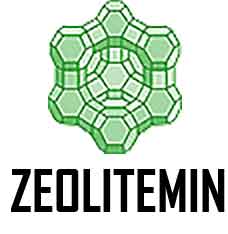Aquaculture
More clients use zeolite in aquariums system,becauase the quality of water in recirculating systems can be improved by using zeolite supplemented fish feed.
Natural Zeolite - Aquaculture
The Effect of Natural Zeolite on Aquaculture Systems

Commercial breeding of fish as a source of protein generates a significant amount of business around the globe. As many species are highly sensitive to fluctuations in water temperature, pH, and levels of oxygen and nitrogen, the chemical and biological environment of aquaculture systems must be closely monitored and maintained (Mumpton, 1985).
How to Purity water by Natural Zeolite as Adsorb Ammonium and Toxic Material in Aquaculture
The natural absorption and adsorption capabilities of zeolite make it the perfect candidate to promote the ongoing health and sustainability of aquaculture systems. In these environments, zeolite as molecular sieve serves three primary functions: to remove toxic levels of nitrogen and ammonium ions from hatchery, transport, and aquarium waters; to provide oxygen-enriched air for breeding and transportation; to purify feedlot and hatchery waters (Mumpton 1985 & 1999).
In closed aquaculture systems, ammonium ions produced by decaying excrement and unused food is a leading cause of gill damage, hyperplasia, sterility, stunted grown, and mortality in fish (Mumpton, 1985). Tests conducted in hatcheries indicate that zeolite’s ion exchange properties control nitrogen content and can provide an alternative to bio-filtration for ammonium removal (Mumpton, 1985 & 1999).
In fact, studies have found that up to 97 percent of ammonium produced in aquaculture systems and water tanks can be removed by zeolite ion-exchange (Mumpton, 1985). As an added advantage, zeolite treatments are low cost and the mineral itself has a high tolerance to changing temperatures and chemical conditions (Mumpton, 1985).
Bergero et al. (1994) examined how different types of zeolites can be used to improve the quality of aquaculture water. The researchers found that ammonia has a great affinity for clinoptilolite based on its crystalline structure. During the study, researchers measured concentrations of ammonia in waters collected from a recirculating system. Findings suggest that clinoptilolite zeolite was effective in ammonia removal due to ion exchange capacities (Bergero et al., 1994). As an additional benefit, lower temperatures did not influence the ion exchange capacity of zeolite.
The Effect of Natural Zeolite on Water Quality and Fish Health
Hargreaves (1998) reported that formulated feeds, fish excrement, and sediment flux add to nitrogen levels in ponds; when levels exceed ponds’ assimilatory capacity, water quality deteriorates because of an accumulation of nitrogenous compounds, like ammonia. Bergero et al. (1994) examined how different kinds of zeolites can be used to improve the quality of aquaculture water. The researchers found that ammonia has a great affinity for clinoptilolite based on its crystalline structure. During the study, researchers measured concentrations of ammonia in waters collected from a recirculating system. Findings suggest that clinoptilolite and phillipsite zeolite were most effective in ammonia removal due toion exchange capacities (Bergero et al., 1994). As an additional benefit, lower temperatures did not influence the ion exchange capacity of any type of zeolite included in the study.
To build on study findings, Bergero et al. (2001) conducted a second study to measure the ammonium content in outflow water of a farm stocked with rainbow trout. The research team sampled output water every 30 minutes over the course of 30 days. Findings indicated that high water flow dilute metabolites in water, which can ultimately prevent ammonium filtration. However, in these cases ammonium output is not easily detected and environmental impact is limited. When water flow rates reach 10.3 l t−1 s −1, ammonium concentrations build and zeolite filtration is effective at removing excess levels from output waters through ion exchange.
Researchers have also found that the removal of nitrogen content through adsorption produces oxygen- enriched air that can be used to aerate fish breeding tanks and transportation tanks; fish housed and raised in such environments are livelier and have greater appetites (Mumpton, 1985 & 1999). The quality of water in recirculating systems can be also improved by using zeolite supplemented food along. Mumpton (1985) found that adding 2 percent zeolite to the regular diet of rainbow trout over a 64-day period resulted in a 10 percent biomass increase with no reported health implications to the fish.
Crystal Clear Water
High Surface Area
- Crystal Clear Water–DE Like Clarity
- Traps More Dirt
- Saves Water–Fewer Backwashes
Ca Ion Exchange
- Purifies Water
- Traps Ammonia, Amines and Heavy Metals
Proven
- Residential and Commercial Uses
- Passes NSF/ANSI Standards
Long Lasting
- Replace as often as Sand
